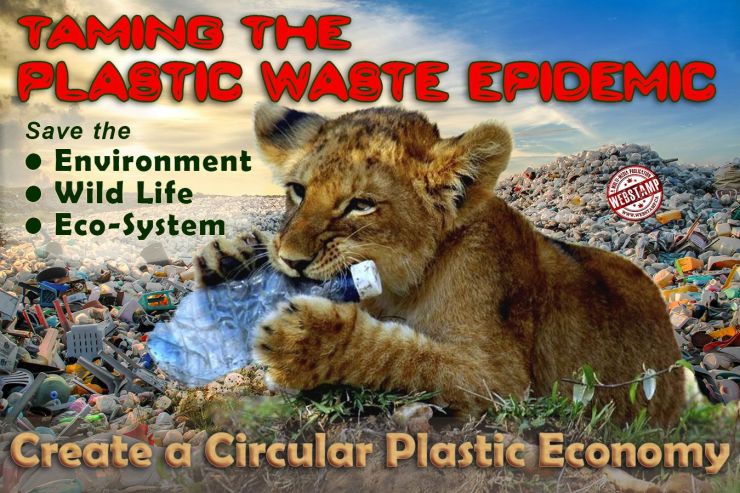WebStamp October 21, 2020
Taming the Plastic Waste Epidemic
The first-ever man-made plastic was created in 1862 by Alexander Parkes while trying to develop a synthetic substitute for waterproofing shellac. Parkesine, now known as celluloid, became a replacement of natural polymers such as shellac, tortoiseshells and horns, as well as many resinous tree saps like rubber. During WWII many types of plastic and chemical innovations emerged including Polyethylene (PE), Polystyrene (PS), and Nylon.
High-density PE (HDPE) was developed in the 1950s and the making of products from the plastic materials that were developed in the war saturated the consumer market. Introduced as a miracle fabric that could be worn, pulled, and washed without any wrinkling or signs of wear-and-tear polyester was introduced to the public in 1951. Today polyester is used in fabrics, clothing, towels, rugs, upholstery, LCD screens, tarps, and bottles.
As with most of the mass production of items manufactured since the Industrial Revolution, and our linear economic system, we have polluted our environment with billions of tons of harmful non-biodegradable plastics. Society began to recycle unused and broken products to help curb the destructive environmental impact of the waste generated by the people. It wasn’t until the early 1970’s that the petrochemical industry realized that the vast majority of plastic they produced would never be recycled. In the late ‘80s, they realized in order to survive that the public needed to feel good about purchasing plastic products and began a plastic recycling program.
Only less than 10% of plastic is ever recycled and the rest ends up in our landfills and oceans and has gotten so out of hand that it prompted the End Plastic Pollution Campaign in 2018 by the Earth Day Network. It has been suggested that if we continue to pollute our environment with plastic that by 2050 there will be more plastic than fish in the ocean. 187 countries, except the US, agreed to have plastic waste added the Basil Convention designating it as hazardous waste to curb the world's plastic crisis.
Even Canada has a plan to zero plastic waste by 2030 with the development of a circular plastic economy. The first phase was implemented by banning harmful single-use plastic items that end up in the environment because they are often not recycled and can be made from other available alternative eco-friendly materials. The second phase is to keep plastic out of the environment and boost the economy by creating investment in a public recycling infrastructure which will spur innovation in technology and product design to better longer-lasting products that are easily recycled.
But more needs to be done. Not only do we need the government to create legislation that will promote a sustainable circular plastic economy but also legislate that companies and corporations must manufacture their products with 100% recyclable plastics and financially support the recycling. It is up to the public to Make A Difference and guide the government towards achieving a Zero-Waste Plastic environment. Even though consultation ended in September of 2018, it is still is not too late to voice your opinion. Participate in the year-round Waste Reduction Week in Canada program happening now from October 19-25, 2020. Make Your M.A.D. Move to reduce the billions of tons of plastic waste.
Articles in this Issue
WebStamp October 21, 2020
References:
https://www.plasticsindustry.org/history-plastics
https://en.wikipedia.org/wiki/Plastic
https://www.paprec.com/en/understanding-recycling/recycling/history-recycling-around-world
https://www.youtube.com/watch?v=ju_2NuK5O-E
https://ourworldindata.org/plastic-pollution
https://www.buschsystems.com/resource-center/page/a-brief-timeline-of-the-history-of-recycling







